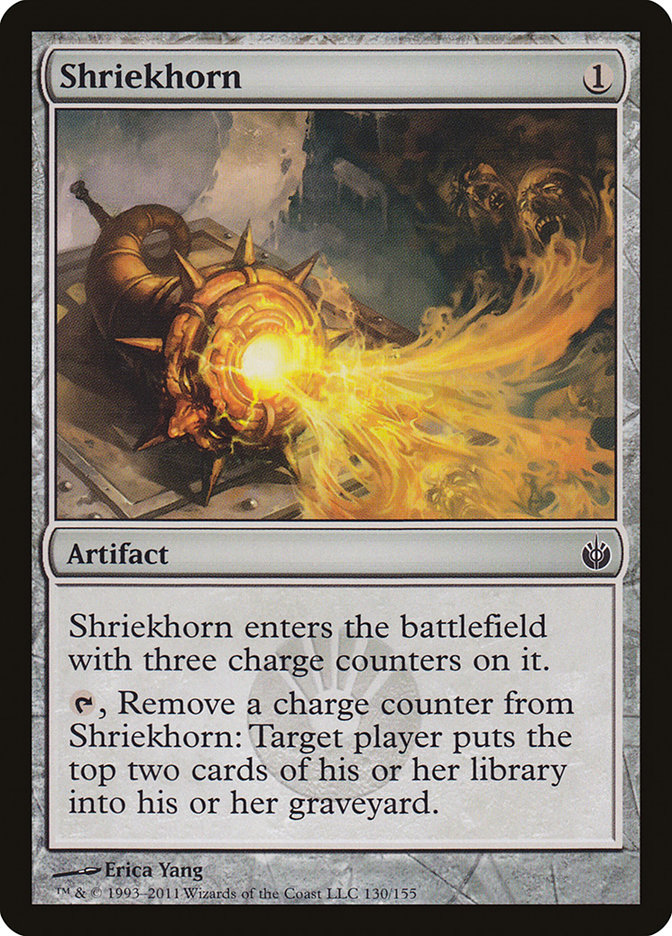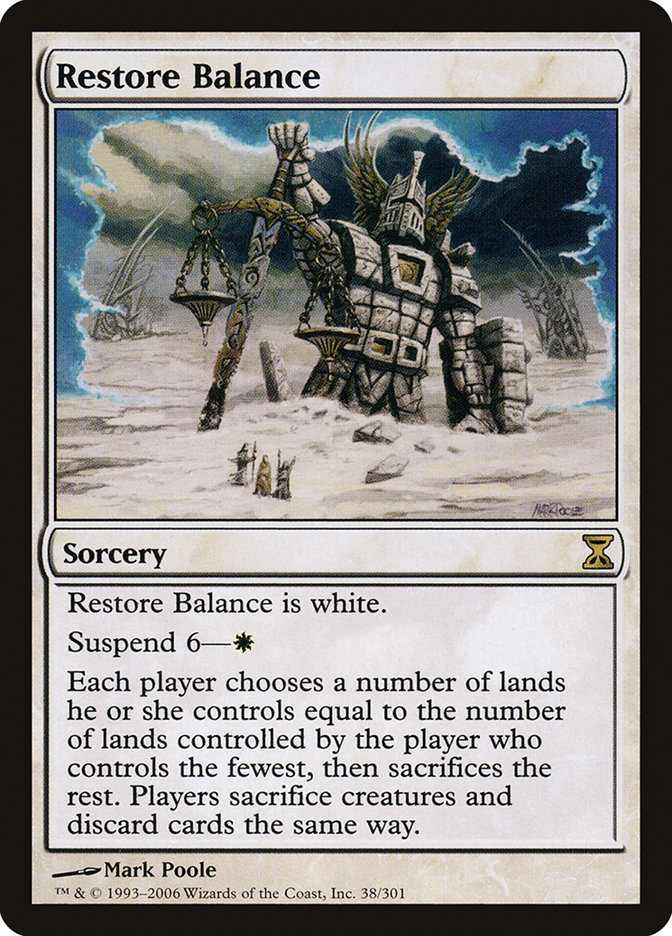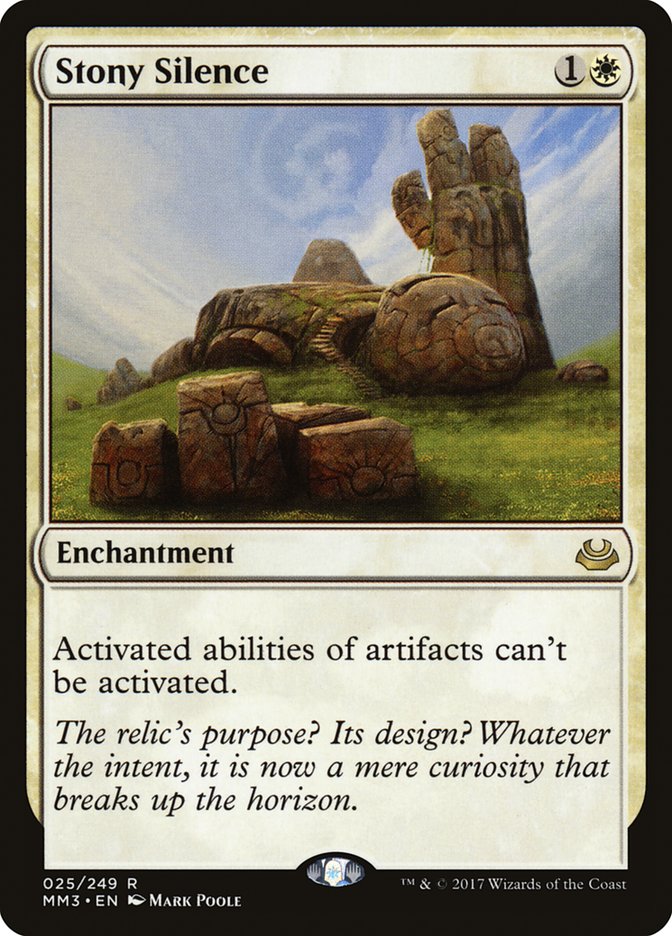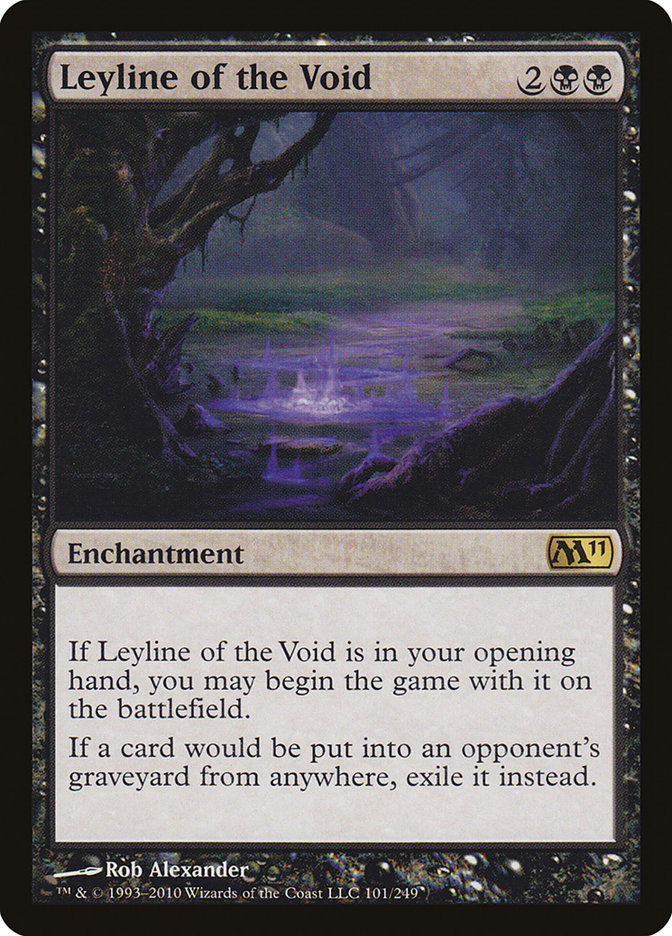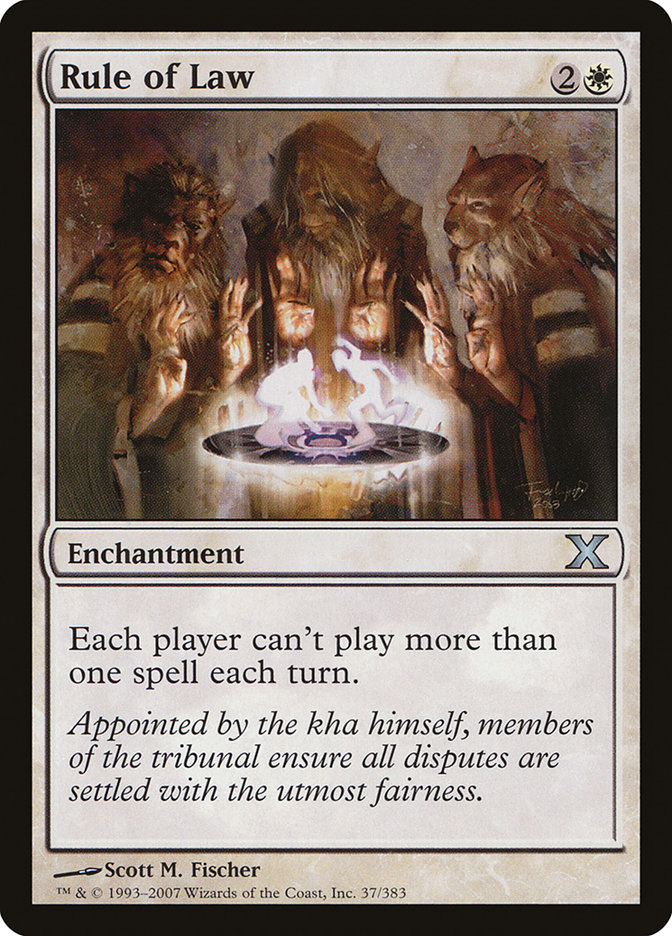The past week, Wizards of the Coast announced that Mythic Championship London will feature an experimental mulligan rule: When a player takes a mulligan, they draw seven cards in every new hand, but when they keep a hand, they put cards on the bottom of their library equal to the number of mulligans they took. This means that a mulligan to six is like the current mulligan, except you get to put any card on the bottom, not just a specific one of the seven, and you get to see all seven before you decide if you’re going to keep. Going further than that, the amount you get punished for taking a mulligan is even more diminished. This means that players can mulligan much more aggressively while losing less equity to win the game.
For Limited, this mostly just means that we’ll play more good games of Magic, although specifically improving starting hands does help aggressive decks more than it helps control decks, since their starting hands matter more. This will mean that decks with low curves can maybe cut an extra land sometimes, that multicolor lands that enter the battlefield tapped should be an even lower priority for aggro decks, and that aggro decks will win a little more often, but in general, the effect shouldn’t be all that format warping.
In Modern the effects of this rule will be far more pronounced. I’m not saying this rule will break Modern, but it will change Modern. It will change which decks are good, it will change how decks are built, it will change sideboarding, and most subtly but almost most frustratingly, will greatly increase the value of scouting. Let’s examine all of that.
To start with, some decks benefit far more from this rule on a surface level than others. Specifically, the more often your deck needs to mulligan, the better this rule is for you. But it’s not just about needing to mulligan – it’s about getting to mulligan more safely and effectively. This will change how decks are built.
Consider Dredge in Modern. Currently, Shriekhorn is played to increase the deck’s consistency. It’s not the ideal enabler, but if you have it in your opening hand, you can probably keep the hand because it will likely put a dredge card in the graveyard for you to allow your deck to start working. What you’d really like, though, is a Faithless Looting or Cathartic Reunion and a dredge card to kick things off.
If you can mulligan more safely, there’s no reason to build for the case where you don’t have your ideal start because you can just mulligan to your ideal start and then build your deck to perform optimally from there. This means you can sacrifice a little consistency for more power – cutting your weakest enablers for more payoffs like more cards that are active in the graveyard, like Vengeful Pharaoh or Ancient Grudge, or more explosive cards, like Burning Inquiry.
Sorry, I’m getting a little ahead of myself talking about changing decks for the new rule. I wanted to start by examining which current decks benefit most from this change, and I’ve broken them into categories.
First category: decks that actively want to mulligan under the current rules. These are decks that somehow benefit from having a smaller starting hand (assuming they get to choose from a seven-card hand which cards they’re giving up). None of these decks prefer a perfect six-card hand to a perfect seven-card hand, but for a large portion of hands, they’d rather put one card back in their library if they could.
Creatures (18)
Lands (19)
Spells (23)

Dredge doesn’t prefer a small hand, but you’d rather have Narcomoeba in your deck than in your hand, you’d often rather have Creeping Chill in your library than your hand, and you’re somewhat ambivalent about Prized Amalgam and Bloodghast being in your library or hand (it depends on whether you can discard them easily). Since most seven-card hands contain either a Narcomoeba or a Creeping Chill, your average six-card hand will be better than your average seven-card hand because you’ll get to put that card back in your library (and you can then use a fetchland to shuffle it in so that you can dredge it into your graveyard).
Lands (21)
Spells (39)

Whir Prison, Lantern, and Mono-Red Prison will benefit from this rule, both because they usually rely pretty heavily on finding Ensnaring Bridge and because they want to start with fewer cards against aggressive decks with small creatures so they can lock their opponent out with Ensnaring Bridge as soon as possible. (An aside on deck building: this change might make players play traditional Lantern rather than Whir Lantern because it’s less important to be able to tutor for certain cards if you can mulligan for them instead, and Whir of Invention the card is worse if you’re starting with smaller hands because it needs a lot of material to work with.)
Ideally you want to cast Restore Balance with an empty hand so that your opponent has to discard their hand. This is obviously easier to do if you start with fewer cards, and, as with any deck that’s looking for very specific cards, more powerful mulligans make it more likely you’ll get to do your thing at all.
The next category of decks that benefit from this change: decks that are looking for highly specific cards or an opening hand composition that don’t need a full hand to work with (sorry Valakut), but also don’t directly benefit from having fewer cards.
Creatures (8)
Planeswalkers (6)
Lands (19)
Spells (27)

You’re really just looking for the exact right four cards – three cards that get you to Tron and a big spell to cast once you have it, although it’s a lot easier if you can keep five cards so that you can keep a Chromatic Star and an Ancient Stirrings or Sylvan Scrying, which together count as one of the three Tron lands. There’s very little cost to putting your second Urza’s Mine back in your deck after you’ve drawn your opening hand, so this rule should increase the number of Turn 3 Karns by a reasonable amount.
Creatures (14)
Lands (19)
Spells (27)

Grishoalbrand is probably the Modern deck with the highest conversion rate of turns to wins, but results seem to imply that it’s too inconsistent in general despite that, given that it doesn’t win more than it does. With a free boost to consistency from this rule, I wouldn’t be surprised if the fastest combo deck becomes the best combo deck, and this could become the scariest Game 1 deck in Modern.
Creatures (4)
Lands (20)
Spells (36)

Lotus Bloom is pretty similar to a Leyline and this deck doesn’t need that many cards to go off if one of them is Lotus Bloom, since the hard part is just getting six mana in one turn. I don’t know if shooting for a Turn 4 kill will be the right strategy, but this deck avoids a lot of the obvious hate while benefiting from the new rule.
Creatures (15)
Lands (29)
Spells (16)

If your deck is named for a specific card, you probably want to mulligan for that card and this rule is probably good for you. Amulet Titan is just on the edge of using too many of its cards for this rule to really help it, but I think it comes in on the side of benefiting pretty strongly.
A number of decks can play one or both of these, and they generally lean pretty heavily on getting one of them onto the battlefield on Turn 1 or Turn 2 and what exactly they do after that is kind of an afterthought that doesn’t require many cards, so all of these decks get a bit better at doing their thing.
The next category of decks that improve: decks that can use hate cards that prey on these decks getting better. If graveyard combo decks are better, so are graveyard hate cards. Most decks can use those, so really the takeaway here is that high-impact hate cards like Stony Silence, Leyline of the Void, Rest in Peace, and Rule of Law are better now; you can mulligan to have them in your opening hand a lot more often and they’ll be a lot more necessary.
Interestingly, Level 2 here is that Dredge, for example, can mulligan for Nature’s Claim and will usually want to do so, which means maybe you want to play Ravenous Trap or Surgical Extraction instead to catch them by surprise.
The Mythic Championship in London, which I guess is just going to be called #2019MC2, will be our first look at a Modern format with a mulligan rule that unambiguously benefits combo decks. This means the natural thing to do will be to either find the most broken combo deck or play a deck that’s particularly good at attacking combo decks. With every combo deck benefitting and each requiring different kinds of cards to stop it, I expect the tournament to be dominated by combo decks, but not by players who just pick up an existing combo deck, rather those who best figure out how to reconstruct an existing combo deck to take full advantage of the new rules.
These decks need to be built for speed and degeneracy; we need to question whether we should play different numbers of lands, different numbers of enablers, just how greedy we can be, etc. I expect the Top 8 to consist of known archetypes, but I’ll be disappointed if the lists aren’t several cards different as a direct result of the mulligan rule in any combo deck (fair decks that don’t mulligan that often generally shouldn’t be constructed very differently, as their adaptations should just be to anticipate a less “fair” metagame).
It’s interesting that Wizards of the Coast decided to test this mulligan rule at a Modern Mythic Championship. It would obviously be less disruptive in Standard, so they’re clearly really looking to stress test it. To me, this means they think it would be a good rule for Standard and Limited, but they’re worried about what it could do to Modern and they care about not ruining that format.
What I wonder is what metrics they’ll be looking at to evaluate how the experiment worked. What result would lead to them keeping this rule versus abandoning it? Obviously, if the Top 8 of this MC looks like previous Modern tournaments, it would indicate that this rule is safe and we’d expect full implementation, but what happens if we see a diverse Top 8 with a few decks like Humans or Spirits that are fair decks that try to prey on combo decks, a control deck of some sort, and four or five different combo decks, three of which are built differently to exploit the rule? It’s clear from the banning of Krark-Clan Ironworks that Wizards of the Coast is happy with how Modern looks right now and they want to disrupt it as little as possible, but how much are they willing to disrupt it here?
More importantly, they know better than to conclude too much from the results of one tournament. We can predict that things will favor unfair decks, but without knowing which will be most successful, it can be hard to target, but a few tournaments down the line, the format can probably self-correct, which really makes one wonder what failure would even really look like from a single event, so what are they really hoping to accomplish from this test run?
I honestly don’t have an answer to that. I also don’t know, if they determine that it’s a clear failure for Modern, whether they’ll consider splitting into different rules for different formats.
The last issue is the scouting issue. Ordinarily, scouting isn’t that important at a tournament – it might tell you to keep or mulligan a hand based on how it matches up against your opponent, but for the most part, you’re going to keep most playable hands even if you know they have a dead removal spell, so knowing what your opponent is playing in advance doesn’t matter that much. But with a mulligan rule where you have to choose a single card to get rid of before your opponent plays a card, knowing whether your Fatal Push is good or bad against your opponent is a really big deal. It’s very easy for accurate scouting to be worth essentially +1 card in your opening hand if you mulligan.
In a world where Wizards of the Coast is trying to get players (especially in the MPL) to be more public about their decks, this creates some pretty serious misaligned incentives, and it’ll be interesting to see how these are dealt with. To be honest, this is the part of the rule that I’m most worried about – needing to put a card back and having a card in my hand that’s great against some decks and bad against others is going to make me feel pretty bad if I don’t know what my opponent is playing but feel like I could have known if I’d put a little effort in earlier.
I do think the London Mulligan is a good change for Magic that will lead to more good games being played, and I’m excited to try to learn how to best abuse the rule in Modern. I have some concerns about tournament logistics for high-stakes events, but I hope Wizards of the Coast can find good solutions to those.


